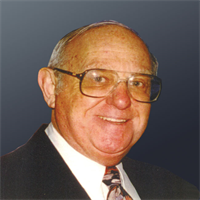Supreme Court Deals Blow to 401(k) Plans
August 1, 2009Comments
Do you own all or part of a business that sponsors a 401(k) plan for your employees? If so, this article is must reading. You won’t like the liability position the Supreme Court has hung over your head. But, as is often the case, adverse circumstances bring opportunity.
On February 20, 2008 our top court decided LaRue v. DeWolff. Bet not even one reader in a hundred knows this landmark case exists. Yet it impacts every 401(k) plan that allows employees to choose their own investments.
The facts: LaRue sued his former employer, DeWolff, claiming a “breach of fiduciary duty because his interest in the 401(k) was depleted by approximately $150,000.”
In a long nine-page opinion, the court clearly held that LaRue could sue his employer, stating, “When a participant sustains losses to his account as a result of a fiduciary breach… (the law) permits that participant to recover such losses.”
Simply put, the boss (you or your company) now can be sued by participants in the company 401(k) plan.
A little history will clarify just how important the LaRue case impact is, and over time, will become. Back in the ’60s and ’70s (when the highest income tax rates were in the 50 to 70 percent range) my CPA firm had a bunch of very busy clients, creating new pension and profit-sharing plans. No question about it, back then these plans were the number one strategy for winning the income tax game.
Our firm’s specialty, back then and still today, was closely held family businesses. We als made the owner(s) of the business the plan trustee(s) to save fees.
One problem: the trustee(s) could be sued and nailed for a breach of fiduciary duties. However the problem was easily solved: We had our clients hire professional money managers to invest the plan funds and then would monitor their results. We created hundreds of plans…never had a client sued.
In 1974 the Employee Retirement Income Security Act (ERISA) was passed. It made many significant changes to the law. It also gave birth to Section 401(k). It took awhile, but over the years, with the growth of mutual funds and advances in computer technology, the modern 401(k) plan was developed. The technical name for these plans is “self-directed plan” because each employee can direct his investments.
We call these plans “cookie-cutter plans” (CC plans) because the companies that sell them all have the same or similar pitch. They all claim three advantages: 1) low cost to start and maintain (in most cases a myth because of hidden costs); 2) employees have many investment choices (the fact is the typical plan allows only about 12 to 60 choices; and best of all, 3) no fiduciary responsibility (the employees cannot sue you.) Today 401(k) plans, particularly the CC plan type, dominate the retirement plan market. Nobody (including me) thought the boss or the company could be sued by a participant for a fiduciary breach. Until now!
Once more, let’s look back in time. In December 2007, just two months before LaRue was decided, I wrote an article tilted, “The Great (Inadvertent) 401(k) Ripoff… Are You and Your Employees Victims?” Following are a few goodies from the article:
“The article is based on the answer to one of the questions I ask every client: “What is your average annual rate of return on your investments—personal funds, qualified retirement plan (QRP) funds, excess funds in your business and other funds you control?”
The shocking answer: 80 percent earn less than the general market (measured by the Dow or S&P) average percentage growth (about 10 percent per year). About one-third average 6.5 percent or less. Ah, but here’s what’s even more interesting—almost all of those in the low-earning 80-percent group do their own investing—great business people, lousy investors.
What about the other 20 percent who, most of the time, beat the general market growth? Almost all of them had a professional money manager. When this 20-percent group used professionals to manager their QRP funds, their employees enjoyed the same investment success. My client files are bulging with hundreds of examples.
So why do about 80 percent of you mess up? You sign up your 401(k) plan as a CC plan. That sounds terrific, but in practice puts you in that unwanted 80-percent group./p>
A CC plan almost automatically puts you and your employees in the unhappy 80 percent group. Why does this happen? Because you and your employees are expected to become investment gurus (and beat the pros). A few do. Most fail. Let’s face it, if your CC plan has 142 (more or less) investment choices, you are locked out of every other possible investment. Worse yet, it is a rare employee or business owner who knows which of those 142 to pick in the first place or when to switch to another investment. Many of the employees (including the boss), overwhelmed by the investment choices, invest a large, sometimes all, portion of their funds in cash—a disastrous long-term investment choice.
Time to confess. When I wrote the article in 2007, it never occurred to me that the only reason—no fiduciary liability—for having a CC plan would go down the drain, courtesy of LaRue.
Now consider the opportunity door LaRue opens for every business with a CC plan. Actually, we have been taking advantage of this opportunity for our clients for years with a simple two-step process: 1) amend (easily done) the CC plan to make the business owner(s) the trustee(s), often called a “trustee plan” (just like the old days to save fees) and 2) hire a professional money manager to invest the plan funds (eliminate the threat of being sued for a fiduciary breach).
It should be noted that most professional money managers have a minimum of $500,000 of funds to be managed. Easily done because the total amount of the funds in the plan is what counts, not the smaller amounts in each participant’s account. Typically, the pros will beat the Dow and S&P by 1 to 3 percent per year, on average.








